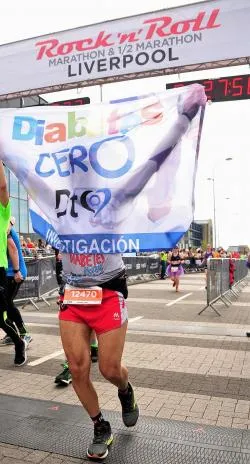Physical exercise is sold alone.Increases years of life and quality of life, also in people with diabetes.The numerous arguments in favor of their practice are superior to the small adverse effects that it can lead to.
However, surveys indicate that almost 50% of the Spanish population is sedentary.
A curious phenomenon is that, traditionally, the practice of physical exercise usually decreases alarmingly when they are between 20 and 30 years old.It can be argued that the increase in responsibilities that adult life entails limits the time that can be dedicated to the practice of physical exercise.
It is common for sports habit to recover something later, between the 40s and 50s.
In the case of people with diabetes this return to training may need to maintain some precautions:
preparation for exercise
The American Diabetes Association recommends an evaluation prior to the start of an exercise program in people with diabetes (type 1 and type 2) with more than 10-15 years of evolution.
This evaluation should include both the valuation of the cardiovascular state, and the influence of possible complications derived from the progress of diabetes and that may be affected by the exercise.
Thus, for example, the presence of diabetic foot would force to avoid some impact exercises, or advanced states of diabetic retinopathy would limit high intensity efforts.
It is important to start the exercise progressively progressively
The popular phrase says that age does not forgive ...
In addition, the years of sedentary lifestyle have surely worsened the state of form, with the worst adaptation to the exercise, especially of high intensity and long duration, as well as the increase in the possibility of the appearance of injuries.
Workloads should be increased, but adapted to the characteristics of each one.It is good to mark objectives but a prudential time must be respected to achieve them.
selection of the type of exercise.Is there any better exercise?
In this case, the answer is clear: the best exercise is one that adapts better to the tastes, schedules and availability of each person, since it will be one that can be maintained for much longer.
Beyond, it is important to know the effect that results from each type of activity.Thus, long -lasting aerobic exercises such as swimming, running or bicycle are those that usually have a greater and important hypoglycemic effect.
On the contrary, exercise that include strength work (weights or force machines) or explosive sports, such as sprints or martial arts fighting, are usually associated with a lower hypoglycemic effect, and even hyperglycemia may appear after exercise.
All exercises have beneficial health effects, but it is necessary to inform themselves about the planned effect of each exercise on blood glucose levels.
Diabetes adaptation
Physical exercise increases insulin sensitivity.This will be noted when starting training in a regular basis with the need to slightly reduce the doses of insulin or to increase the contribution of carbohydrates before, during and/or after the exercise.
One of the most common phenomena is the appearance of hypoglycemia after exercise, which can occur up to 12-24 hours after finishing the activity.
Therefore, it may be necessary to consult previously with the health team to schedule an action plan before the exercise that includes the possible changes in the insulin pattern and the adaptation of the doses of carbohydrates.
Attention to challenges
Attention toSports challenges when you have very common diabetes that at the beginning of the physical exercise, the achievement of challenges as a way of overcoming, such as running a half marathon or doing a 100 km cycling test.
These challenges help maintain motivation in daily training.But it is important to highlight the need to perform a somewhat slower progression than usual that also allows diabetes treatments, such as insulin doses or carbohydrate supplementation.
It may be useful to keep a record of the training performed, indicating the modifications of the insulin doses and the changes in the consumption of carbohydrates, as it will be a good reference to perform training with greater intensity or duration.
In short, physical exercise is beneficial at any age, but it is always preferable to be programmed and adapted to the tastes and state of each person, gradually learning what changes should be made according to the exercise that is practiced.
By: Serafín Murillo
Nutrition and Sports Advisor of the Diabetes Foundation.Dietitian-Nutritionist and researcher at CIBERDEM (Hospital Clínic de Barcelona).


